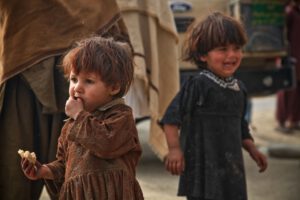By Aman Jain. Originally published at ValueWalk.

We all have an idea of the richest countries in the world, but the same can’t be said when it comes to the poorest countries. There is no precise measure defining how poor a country is. However, GDP per capita is regarded as the best indicator showing how poor or wealthy countries are in relation to each other. We have also used the same indicator to come up with the list of poorest countries in the world.
Q4 2020 hedge fund letters, conferences and more
Poorest countries in the world
Our list of poorest countries in the world is based on the list from Focus Economics. The publication, in turn, used the forecasts for GDP per capita in 2025 to rank the poorest countries. According to the publication, the GDP per capita forecasts are based on the individual forecasts of more than a thousand popular “investment banks, economic think tanks and professional economic forecasting firms.” Here are the 10 poorest countries in the world:
-
Zimbabwe ($1,185 GDP per capita)
After Zimbabwe gained independence in 1980, it was expected that the country would soon be able to give its citizens a decent standard of living. Zimbabwe features fertile land, developed infrastructure, significant mineral wealth and an educated population. However, the country witnessed high unemployment and hyperinflation under the leadership of Robert Mugabe. Moving ahead, an uncertain political environment and extremely high inflation will continue to pose a risk to the country’s economic growth.
-
Rwanda ($1,122 GDP per capita)
Rwanda has come a long way since the genocide in 1994. The country’s per capita GDP increased from $250 in 2000 to $800 in 2019. Although the country has witnessed a surge in investment in recent years, it faces a few risks as well. These risks include low domestic savings, rising energy prices and a weak fiscal position.
-
Uganda ($1,100 GDP per capita)
After gaining independence from the U.K. in 1962, Uganda has faced years of insecurity and political turmoil. However, over the past few years, the nation has witnessed rapid growth, especially in the industry and service sectors. Uganda is expected to be one of sub-Saharan Africa’s top performers over the next five years. In the coming years, the country’s growth will be led by the development of the oil sector, construction and services.
-
Mozambique ($607 GDP per capita)
Mozambique is one of the fastest-growing African economies, but it is still recovering from almost two decades of civil war that ended in 1992. Mozambique gained independence from Portugal in 1975. Over the past 10 years, the country has posted impressive GDP growth of about 5%. However, high external debt, volatile energy prices and the Islamist insurgency in the north of the country pose a risk to economic growth.
-
Democratic Republic of the Congo ($558 GDP per capita)
The Democratic Republic of the Congo is the biggest country in sub-Saharan Africa. Although the country has a vast amount of natural wealth, it hasn’t seen much economic growth since achieving independence from Belgium in 1960. The greedy dictatorship, political instability and constant violence have crippled the economic development in the region. However, the Congo has the potential to become one of the richest African nations. It has 80 million hectares of arable land and is home to more than 1,000 minerals and valuable metals.
By PPP per capita
The above five poorest countries were based on the GDP per capita forecast. Now let’s take a look at the five poorest countries on the basis of purchasing-power-parity (PPP) per capita (IMF World Economic Outlook October 2019):
-
Niger ($1,106)
According to 2014 World Bank data, about 44.5% of Niger’s population lives in extreme poverty. The country has witnessed military coups since its independence from France in 1960. A significant proportion of the population depends on small-scale agriculture for their livelihood. Food insecurity, disease and mortality rates pose big challenges to the country’s economic growth.
-
Eritrea ($1,060)
This small East African nation has a population of about 3.5 million. About 65% of the people live in rural areas, and 80% of them depend upon subsistence agriculture for living. In the Heritage Foundation’s 2020 Index of Economic Freedom, Eritrea was ranked 47th among 47 nations in the sub-Saharan Africa region. The nation also faced almost three decades of civil war that ended in 1991.
-
Democratic Republic of the Congo ($849)
Already discussed above.
-
Central African Republic ($823)
The Central African Republic is rich in gold, oil, uranium and diamonds, but it is also the world’s hungriest country. According to the 2018 Global Hunger Index (GHI), it was the only country with hunger levels classified as “extremely alarming.” However, the country has witnessed growth in recent years, driven by the timber industry and recovery in the agricultural and mining sectors.
-
Burundi ($727)
Like many other countries, Burundi also faced almost three decades of civil war after it gained independence from Belgium in 1962. According to 2014 data from the World Bank, about 65% of the country’s population lives in extreme poverty. About 90% of the nation’s citizens depend on subsistence agriculture, while less than 5% have access to electricity.
The post These Are The Poorest Countries In The World appeared first on ValueWalk.
Sign up for ValueWalk’s free newsletter here.



